- Waitzman, Daniel
- Published by D. Waitzman c.1995, New York
- Score 23 p. and 1 part of 5 p. 28 cm
Originally written for Guitar and 'big' Orchestra, Walter himself transcribed it for Guitar-ensemble and Winds ad.lib.

|
Duration: 0'43", 01 kB. The opening of reflexe with the theme of Sanz as indicated in the sheet music |
| Opening of 'Reflexe' arranged for 2 guitars by Helmut Richter | © H. Richter, reproduced with permission |
|---|---|
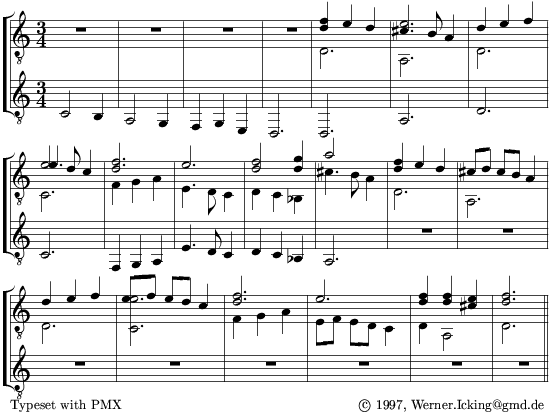 |
|
- Richter, Helmut (guitar) & Wölki, Marko (guitar) 'Reflexe,
Alte Musik des 20.Jahrhunderts'
Helmut Richter wrote about the track 'reflexe':I made the transcription for two guitars after talking with Fried Walter, who was pleased to hear about it and approved of the transcription afterwards. Walter takes the theme (Gaspar Sanz) and adapts it into variations according to the chronological style of later musical periods and composers in sometimes a very humorous way. He was not trying to duplicate the different musical styles in a scientifical historical context, but rather intended to create the means for an enjoyable journey through the musical history. However, you can always hear the 'melody' on top of things but in quite different rhythms. There is a theme and 8 Variations: 1550 Renaissance (1'45"), 1650 Barock (1'23"), 1750 Rokoko (1'58"), 1850 Fandango (1'34"), 1820 Biedermeier (1'37"), 1890 Wiener Walzer (2'06"), 1925 American Banjo (1'06"), 1965 Beat (1'08"), 1972 Avantgarde (1'23"), ...und noch einmal das Thema (1'01").
- Released 1997 by Richter/Wölki compact disc 001. This cd can be ordered at Zupfmusik Diskothek, M. Herzog Dagobertstr. 8a, 76833 Siebeldingen, Tel/Fax : 06345-8817, or by sending a mail to Helmut_Richter@t-online.de
- Duration: 15'01"
- Recording date: October 1997, in the evangelischen Kirche in Oberhausen - Schmachtendorf, Germany.
- Walter, Fried
- Published as a facsimile for mandolin orchestra by Edition Zimmermann 1987, Frankfurt (Germany)
- Score 35 p.
- Publisher No. ZM 2681
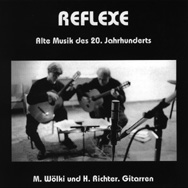
Tony leaves little doubt about the Baroque setting for his Folia Variations because halfway the piece (1'47") there is a little wink to the Canon in D of Pachelbel, a piece even more famous than the Folia itself!

|
Duration: 3'15", 3.2 Mb (128kbs, 44100 Hz) |
 |
The complete Folia Variations, 9 pages in pdf-format, size 92 Kb |
I wrote the piece during the last couple of weeks. My reasons for the composition were several. First, it's my first attempt at a quartet; I wanted to get a feel for the instruments. I chose the Folia theme because I've used it in several piano pieces and found it attractive. It's a nice progression to move from a minor tonic to a dominant chord in a decorated manner.
- Tony T. Warnock
- Title: Foliana
- Arranged from a Finale2007 produced wav file
- Not released yet by any record company
- Duration: 3'15"
- Recording date: April and May 2007 in Texas, USA
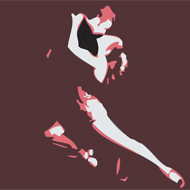 Imagine a large empty ballroom and this elegant tango will let you go.
Imagine a large empty ballroom and this elegant tango will let you go.

|
Duration: 3'38", 3.4 Mb (128kbs, 44100 Hz) |
 |
The complete Pentango, 8 pages in pdf-format, size 107 Kb |
The main theme has a five note pickup, thus the name. .
- Tony T. Warnock
- Title: Pentango
- Arranged from a Finale2007 produced wav file
- Not released yet by any record company
- Duration: 3'38"
- Recording date: 2008 in Texas, USA
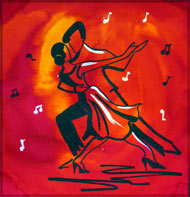 |
© Jolanda van der Elst, |

|
Duration: 3'38", 3.3 Mb (128kbs, 44100 Hz) |
 |
The complete Tangofolia V, 4 pages in pdf-format, size 64 Kb |
Tangos usually consists of 16-measure sections so I wanted to try using the Folia harmonic scheme as half of a pattern. I've done this in other tangos, but for this one, I also used the Folia discant as the basis of the melody. The major-key theme is based on a descending scale pattern. The tango has had a long run as a living musical and dance style. My tangos tend to be a bit old-fashioned (maybe from the pre-1930 era in style.) I just find tangos to be fun to listen to, and thus fun to write.
- Tony T. Warnock
- Title: Tangofolia V
- Arranged from a Finale2007 produced wav file
- Not released yet by any record company
- Duration: 3'38"
- Recording date: June and July 2007 in Texas, USA
Less dominant as in Tangofolia V, the 'later' folia theme is included in this syncopated tango. Only towards the end (2'40") the first line of the Folia is revealed in a straigt forward setting.
| Folia theme in Magnolia bar 105-108 | by Tony T. Warnock |
|---|---|
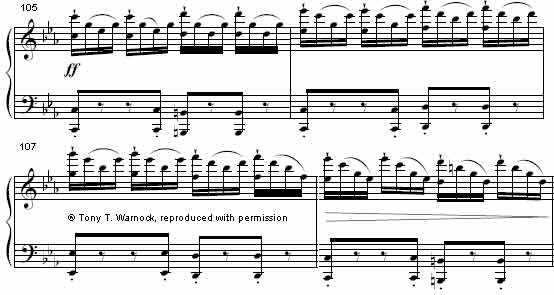 |
|

|
Duration: 3'05", 2.9 Mb (128kbs, 44100 Hz) |
 |
The complete Tango Magnolia, 7 pages in pdf-format, size 104 Kb |
Attached is another composition. I was trying some new ideas but I still used the Folia chord pattern (and discant) in parts. Actually, I used the discant (the one Corelli used) for a bass line too in the syncopated section.
- Tony T. Warnock
- Title: Magnolia
- Arranged from a Finale2007 produced wav file
- Not released yet by any record company
- Duration: 3'05"
- Recording date: August 2007 in Texas, USA
Another rather traditional tango with the Folia stated as one of the motives in the first section and at the very end.
| Folia theme in Tango, bars 10 till 17 | by Tony T. Warnock |
|---|---|
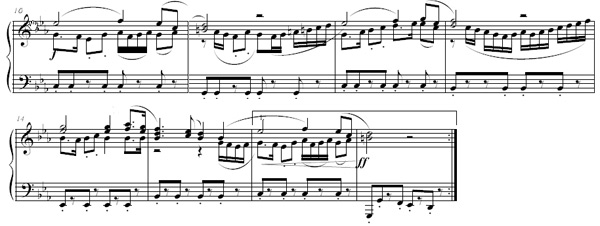 |
|

|
Duration: 3'43", 3.5 Mb (128kbs, 44100 Hz) |
 |
The complete Tango, 5 pages in pdf-format, size 70 Kb |
Here is a new piece that uses the Folia chord scheme in the second part of the first section and then uses the scheme at double, quadruple, and octuple speed in the coda.
- Tony T. Warnock
- Title: Folia
- Arranged from a Finale2007 produced wav file
- Not released yet by any record company
- Duration: 3'43"
- Recording date: November 2007 in Texas, USA
A smooth piece leaning towards the melancholy with the leading clarinet and cheerfulness with mariachi-influences in the copper section at the same time in this rumba with the Folia theme hidden inside the long sustained chord progression and as always Tony puts some nice modulations within the piece. June 8, 2010 a revised version was sent with some changes in brass lines and the piano part of the "B" section.
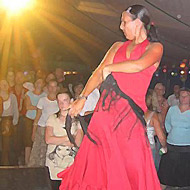

|
Duration: 3'30", 3.3 Mb (128kbs, 44100 Hz) |
 |
The complete Rumba # 1, 18 pages in pdf-format, size 229 Kb |
I finally (or Finale2010ly) wrote another piece using the Folia chord progression. It's a rumba (can be danced either American or International style) rather than a tango. I suppose, techincally, it's a "bolero-son" but most dancers wouldn't recognize that term.
- Tony T. Warnock
- Title: Rumba # 1
- Arranged from a Finale2010 produced wav file
- Not released yet by any record company
- Duration: 3'30"
- Recording date: April and May 2010 in Texas, USA, this revised version June 8, 2010
It is always a delight to receive another lighthearted and smooth Tango with the Folía progression cleverly hidden within the music and this one is no exception. Different catchy parts and unexpected modulations get your feet from the floor.. .
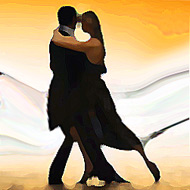

|
Duration: 3'19", 3.1 Mb (128kbs, 44100 Hz) |
 |
The complete Tango Ornitorrinco, |
I have a new tango that uses the Folia chord pattern a bit. The name comes from the Spanish word for duck-billed platypus (a monotreme). It's a pun based on the monothematic construction of the music
- Tony T. Warnock
- Title: Tango Ornitorrinco
- Arranged from a Finale2010 produced wav file
- Not released yet by any record company
- Duration: 3'19"
- Recording date: March and April 2011 in Texas, USA
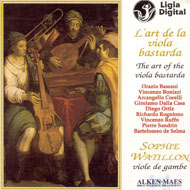
- Watillon, Sophie (viola bastarda) Devaere, Hannelore (harp) Leertouwer,
Detmar (cello) Liegeois, Frank (bass viola da gamba) Noiri, Shizuko (lute)
Stinders, Herman (harpsichord) Stryckers, Piet (bass viola da gamba) Valetti,
Pablo (violin) Laethem, Katelijne van (soprano) 'L'art de la viola bastarda
- le chant et la danse'
- Released December 1994 by Ligia compact disc 106020
- Duration 1'33"
- Recording date: August 1994 in the Franc-Waret Church, Namur Belgium
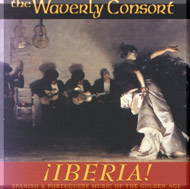
Escorial manuscript Bc M. 1452, circa 1731, modern edition Maurice Esses
Kay Jaffee wrote for the slipcase:
The Folía is thought to have been a Portuguese folk
dance before it moved to the more sophisticated locales of court and theatre.
Contemporary accounts describe it as frenetic and noisy, hence the idea
that the name referred to the dance steps - "mad", "demented",
"crazy". By the end of the 15th century, comic scenes set to the
folía had become a staple at popular festivals and court shows. The
anonymous 16th-century Portuguese vilancete Não tragais borzeguis
pretos is an example; alluding sarcastically to the dreary dress code
imposed at the court of King João III, it instructs the courtier
that black buskins (the laced leggings covering the lowerleg and foot) shall
henceforth not be worn.
By the end of the 17th century, a dance called "Folie d'Espagne"
had moved north to the Paris Opéra, where it was featured, fully
choreographed, as a stylized dance in the noble style. Composers all over
Europe found the folía's harmonic pattern an apt subject for extended
instrumental variations; examples by Corelli (for violin) and Marin Marais
(for viol) are among the best known today. Our diferencias (variations)
are selected from an anonymous set, Folías de Espanya ab mudansas,
written for an unspecified melody instrument and preserved in a Spanish
manuscript from the early 18th century.
- The Waverly Consort 'Iberia'
- Instrumentation: bass viol, harp, 2 guitars
- Released 2001(?) by WAV compact disc 14002
- Duration 4'50"
- Recording date: April 1-4, 2002 at the Performing Arts Center, Purchase College, State University of New York, Purchase, NY.
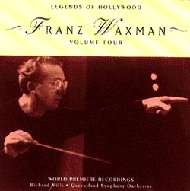
Waxman wrote for the slipcase:
this recording concludes with a suite from the 1938 Joseph L. Mankevicz produktion of A Christmas Carol starring Reginald Owen as Scrooge. Edwin L. Marin directed this version of the Dickensian classic for MGM. The fifty-minute score contains ten themes incorporated into twenty-three orchestral numbers and seven choral selections. Waxman had to whip all of that into shape within five days! The recording session began at five in the afternoon and ended at nine the following morning. The composer noted: 'High pressure has no ill effect on the inspiration but it's pretty hard on the body'.
- Queensland Symphony Orchestra conducted by Richard Mills
- Released 1996 by Varese Sarabande compact disc VSD 5713
- Duration: 1'20"
- Recording date: February-March 1993 in the Autralian Broadcasting Company's Brisbane Studios
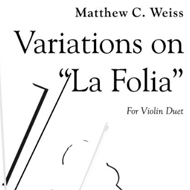
The complete Variations
on "La Folia" for violin duet |
I composed it in the Summer of 2009 specifically to be included in a Concert of Historicist Composers sponsored by the Delian Society. Honestly, I cannot remember exactly how the idea came to me (probably in the middle of the night), though I do have fond memories of learning Corelli's La Folia variations as a child while studying violin.
I was especially intrigued by the meaning of "The Madness" or "Folly". So each variation depicts this in one way or another and the piece progresses to a rousing finale that incorporates some material from the previous variations. I'm planning to make a nice recording of this piece in the next few weeks and post a video on YouTube.
- Matthew Weiss (violin), Stephen Daniels (violin)
- Title: Variations On "La Folia" for Violin Duet
- Duration: c.8'20"
- Premiere performed July 18, 2009 at the St. John United Lutheran Church organized by The Delian Society as part of the program "A Concert of Historicist Composers"
- Matthew Weiss (sheet music)
- Title: Variations On "La Folia" for Violin Duet
- Published by Editions Musica Ferrum, 12 pages, ISMN: 979-0-801164-38-4
- The publication can be ordered at http://www.musica-ferrum.com/catalog/viewitem.php?show=42
- Matthew Weiss (violins)

- Title: Variations On "La Folia" for Violin Duet
- Released 2012 by Pranakasha Productions mp3-format
- The soundtracks of the duet and the separate violins are available
- Duration: 8'23" (total length of all three tracks 23'54")
- Recording date: December 2012 in Seattle Washington, USA
- The music can be ordered at Amazon.com: http://www.amazon.com/Variations-On-Folia-Violin-Duet/dp/B00AYVJ5DS/ref=sr_1_3?ie=UTF8&qid=1357794538&sr=8-3&keywords=la+folia+duet
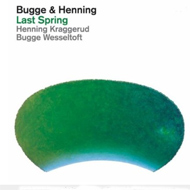 In the slipcase is written:
In the slipcase is written:Then there is also an improvisation on the baroque La Folia, the oldest melodic-harmonic compositional structure, and finally a rendition of Johannes Brahms' Lullaby.
- Wesseltoft, Bugge (piano ) and Kraggerud, Henning (violin) 'Bugge & Henning, Last Spring'
- Title: La Folia (improvisation)
- Released 2013 by ACT compact disc order number 9526-2
- Duration: 2'44"
- Recording date: November 2011 in the Rainbow Studio. Oslo, Norway
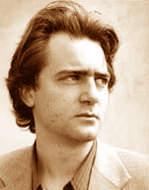
The work was commissioned in 2002 by Rahel Cunz (violin) and Jacqueline Ott (marimba) and premiered in Küsnacht near Zurich, Switzerland. The piece has received many performances.
The peaceful Folia-theme is introduced by the violin solo after a short introduction within the first minute of the piece and it is already fighting in the theme to finish the melody properly like it is in an inner struggle of desperation. The listener than already knows that the traditional variations are hardly to expect. Is the marimba as companion a firm ally or no more than a misleading tool? In the first parts the instruments seem to avoid any coherence. Is it all a dream of someone who has just read the Ilias or Odysseus by Homer? The detailed subtitles (stations of the journey) give room for these kind of thoughts, but let us focus here on the Folia theme which reappears now and then in twisted forms. Towards the end of the piece the melody lines calm down and the Folia-theme is stated in a more structured and harmonic interaction between violin and marimba.

|
Duration: 2'07", 873 kB. (56kB/s, 22050Hz) |
Das Stück, welches im Auftrag von Rahel Cunz und Jacqueline
Ott geschrieben wurde, basiert auf der berühmten Violinsonate Opus
5/12 von Arcangelo Corelli (1653-1713), genannt La Follia; Variationen über
ein Thema von Farinelli - einem Komponisten und Freund von Corelli und Onkel
des gleichnamigen Starsängers des 18. Jahrhunderts.
La Follia, ursprünglich ein wilder, hedonistischer portugiesischer
Tanz, präsentiert sich beim Aristokraten Corelli als nobler Variationen-Satz,
gehalten im Rhythmus der Sarabande.
Das Thema, genannt "Farinelli", begibt sich in diesem Duo auf
eine phantastische Reise in ein Spiegeluniversum, wo es u.a. Leonard Cohens
Song "First we take Manhattan (1988) und Ennio Morricones Mundharmonica-Melodie
aus "Spiel mir dass Lied vom Tod" (1968) oder einem verlausten
Mensuralkanon begegnet. Den Formen und Strukturen dieser "Variationen"
liegt die vollkommene Zahl 28 zugrunde.
These are the stations of the journey:
Farinelli is enraged and no longer sober, Farinelli is unhappy and leaves his home, Farinelli
takes a walk in the cold night, Farinelli sees the shining stars, Farinelli strays away and
is overcome with yearning, Farinelli tries to gain momentum, Farinelli begins running, Farinelli
takes off, Farinelli sees the ground disappearing, Farinelli floats to cold heights, Farinelli
arrives in a foreign world, Farinelli rises to new spheres, Farinelli traverses turbulent stratums,
The solar wind carries Farinelli to outer space, Farinelli sinks into dark depths, The sinking turns
into an ascent, Farinelli leaves Death lying to the left, Farinelli sees his mirror image, Farinelli
finds himself in a worm-hole, Did something happen?
- Rahel Cunz (violin) & Jacqueline Ott (marimba)
- Title: La Follia: Farinellis Reise zu den Sternen
- Recorded by Swiss Radio not released by any label yet
- Duration: 12'45"
- Recording date: 2002
- More about the composer at his website in the English or the German language http://www.martinwettstein.ch/ where the whole composition can be listened
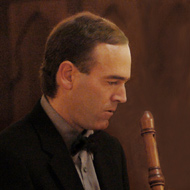
21 variations for 3 parts on one of the most commonly arranged pieces in musical history (2 melody instruments and bass).
 |
Duration: 5'24", 19 kB. |
Fred Weyman wrote in an e-mail about his Folíacomposition:
Since Corelli's LaFolia variations had been a favorite since my youth, for me it wasn't a matter of choosing to write LaFolia variations, but avoiding the obvious choice for many years. Even though Corelli's set was the most valuable instructional model for writing variations that I was familiar with, I hesitated to use it because (as illustrated by your website) so many others had already done that. I also preferred writing variations of pieces that were more familiar to modern audiences because I think variations of familiar tunes are more appreciated by the listener because it is easier for them to hear the underlying original tune than with unfamiliar pieces. It wasn't until I started writing more trios that I decided that my versions of LaFolia would be more original.
I especially enjoy hearing and playing three part pieces where all three parts have important, independent, and melodic lines. In the baroque period trios were very popular and were considered the true test of a composer. Recent psycho-acoustic studies have shown that most listeners can keep track of 3 simultaneous lines fairly well but have difficulty with 4 or more. This piece contains 21 variations written in a semi-canonic form in that the first melody line always plays new material while the second melody line plays the material that the first line just finished.
- Weyman, Fred
- Published 2011 by Fred Weyman
- 7 Pages 29 x 21 cm in 3 versions:( 2 melody instruments and bass), (AAB recorders = alto 1, alto 2, bassand), (SST recorders = sop 1, sop 2, tenor)
- Available at Freds musical pages: http://fredweyman.web.officelive.com/EarlyMusicArrangements.aspx
- Duration: ca. 5'24"
- More about the music of this composer at http://fredweyman.web.officelive.com
- You can find the photography website by Fred Weyman at http://fredweyman.art.officelive.com
Menachem Wiesenberg wrote about his composition:
The work derives its inspiration from the traditional melodic
– harmonic – rhythmic pattern called "La Folia" which served as
a framework for dozen of works written since the Renaissance to the present
day. The name’s origin relates to the fact that, at first it served as pattern
for music and dance in which the dancers became ecstatic, and seemingly
struck by madness.
In my treatment of this traditional form, I tried to derive my ideas from
its typical melodic structure, its basic rhythmic character and its dance-like
origin as well as form the obsessive, everlasting repetition of the basic
pattern while making changes and variations, in my own language.
The Work consists of four movements: Fast-slow-fast-slow, with the first
three almost connected and the fourth independent. This last movement is
in the form of a funeral march in which I tried to express my feelings and
pain in regard to the collapse of the process and the loss we are experiencing
in the present era.
- The Israel Camerata-Jerusalem Orchestra conducted by Andrew Lawrence-King
- Duration: 18'44"
- Recording Date: 2001
- More about the oeuvre of the composer and to listen to the entire piece at http://www.mwm.co.il/
- The Dallas Symphony Orchestra conducted by Arter Fisch
Laurie Shulman wrote in an introduction for the Playbill by the Dallas Symphony Orchestra for the American premiere at Dallas in March 2003:
(© Laurie Shulman, First North American Serial Rights Only, and used with permission)
The four movements of Concerto da camera are arranged fast-slow-fast-slow (a rereversal of the more customary baroque arrangement of slow-fast-slow-fast). The first three movements are connected, with no discernible pause between them. Wiesenberg writes with a rhythmic and harmonic spikeness reminiscent of Stravinsky's neoclassical period, initially alternating the concertino group (solo flute, oboe, horn and bassoon) against the strings. Complex rhythmic motives travel among the solo players above the pulsing regularity of cellos and basses. At first, after the opening gambit, they play in steady motor rhythm, as we familiarize our ears with the recurrent harmonic pattern of the Folia. Presently Wiesenberg varies the bass as well, imbuing each variation with its own character and moving from one to the next with seamless transitions.
The spirit of the dance suffuses the first three movements of Folias, allowing opportunities for elegant solo work in the four woodwind instruments. Wiesenberg's piquant harmonies are flavored with hints of Middle Eastern scales. His handling of the strings is particularly effective, with several passages for the principal players and a couple of passages for the first three chairs in each string section, in addition to writing for the full complement. Each section of the music (Allegro ritmico, Intermezzo, Allegro molto ritmico and Largo: Marcía alla funebre) is defined by its own distinctive set of rhythmic motives, often in imitation. For example, the Intermezzo begins with oboe and horn in a slow-moving duet above a jagged line from muted cellos and basses. Eventually flute and bassoon join in, then Wiesenberg provides a lyrical passage for principal strings. Nowhere in the Intermezzo does the full ensemble play.
The finale stands as an indepedent movement. Wiesenberg has cast it as a funeral march. "I tried to express my feelings and pain in regard to the loss we are experiencing in the present era," he explains.
I used C and not D as the fundamental note because I wanted the last part to be a lamento (which i felt was so appropriate to our situation here in the [Middle East] region when the peace process was collapsing and we are all going through a period of death and destruction). So the Lamentohad to be in C because Cminor used to be the tragic key. The skeleton melody follows the pitch pattern C, B, C, D, Eflat, D, C, B. The piece is saturated with these notes in all possible combinations. I used ostinati and different rhytmic displacements (notably the hemiola) so often found in Renaissance folias.Wiesenberg begins the finale with a chorale for the first chair strings (excepting bass), playing as a string quartet without vibrato. Gradually he expands the ensemble until the full string choir is playing, then introduces plaintive commentary from each of the solo woodwinds. The music is powerful and emotional, anchored by the inexorable repetition of the folia bass. In light of the Columbia shuttle disaster early last month, in which an Israeli astronaut died along with six Americans, Wiesenberg's closing movement takes an added poignancy.
Concerto da Camera is scored for one flute, one oboe, one bassoon, one horn, and strings.- Duration: C. 19'
- Date of performing: March 2003, Dallas, Texas, USA
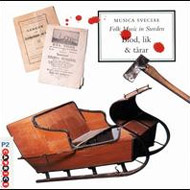
See for the details of the Sinclairvisan Anonymous traditional.
- Willemark, Lena 'Blod, lik and tarar/Blood, Corpses and Tears'
- Title: Sinclairvisan
- Released March 1997 by Caprice Records compact disc CAP 21542
- Duration: unknown
- Recording date: all recorded by the Swedish Centre for Folk Song and Folk Music Research (Svenskt visarliv) in the homes of those who themselves had learnt the songs from older relatives and carried the tradition on
| Folies d'Espagne | Collected by Thomas Wilson |
|---|---|
 |
|
- Thomas Wilson
- Title: A Companion to the Ball Room, containing a choice collection of the most Original and Admired Country Dances, Reels, Hornpipes, Waltzes, and Quadrills, with appropriate Figures to Each. The Etiquette and a Dissertation on the State of the Ball Room
- Published ca. 1820 by D. Mackay, London, England
- Page 174, for one melody instrument (without harmony)
- Available in the public domain http://imslp.org/wiki/A_Companion_to_the_Ball_Room_(Wilson%2C_Thomas)

For more information and acoustical examples http://www2.cpdl.org/wiki/index.php/A_Catch_on_the_Midnight_Cats_%28Michael_Wise%29
- Ensemble Lux Musica (Patrice Maginnis soprano, Boyd Jarrell bass baritone,
Amy Brodo cello, Brian Staufenbiel tenor, Victoria Gunn violin, Linda
Burman-Hall harpsichord)
- Title: A catch on the cats 'Folias'
- Arranged by Linda Burman-Hall
- Released February 2001 by Kleos compact disc 2639928
- Duration: 3'53"
- Recording date: unknown in England
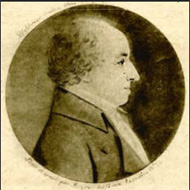
- No published music of Les Folies d'Espagne found.
- Published in Fétis, François-Joseph, Biographie universelle des musiciens…, tome 8, 2e édition, Paris, 1868, p.51 Edition : Paris : Corbaux
- Thanks to François-Emmanuel de Wasseige for detecting this item in literature
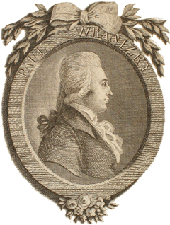
 |
Duration: 4'39", 62 kB. |
This 'symphony' only survives in two copies, with differnet finales. One in the music archive of the Lobkowicz family where Paul's brother Anton was music director, and one in the former music collection of the empress Marie Therese (wife of Franz II of Austria).
This particular 'symphony' amounts to some kind of potpurri with music taken from different other works by Wranitzky - something which is not representative for his general output. I would guess it was hastily compiled for one of the concerts of the imperial family.
All movements evidently come from different works, except for this third movement - a depiction of a battle ending with a lyrical cello solo. It is likely it also comes from some other work, but I have not yet found a source for it. Anyways, the short Folia progression starts at bar 61 and is hard to miss!
| The Folia theme, bars 61 till 64 | by The Wranitzky Project, used with permission |
|---|---|
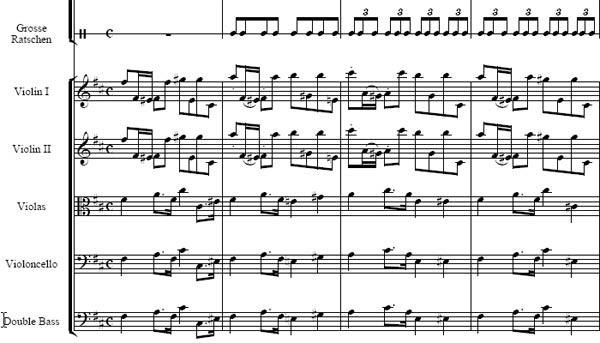 |
|
-
- Title: third movement of the Symphony in D, Postolka 22
- Duration: c. 4'40"
- Not recorded yet
- More information about the composer Wranitzky and the sheet music see the Wranitzky-Project at http://www.wranitzky.com/index.html
